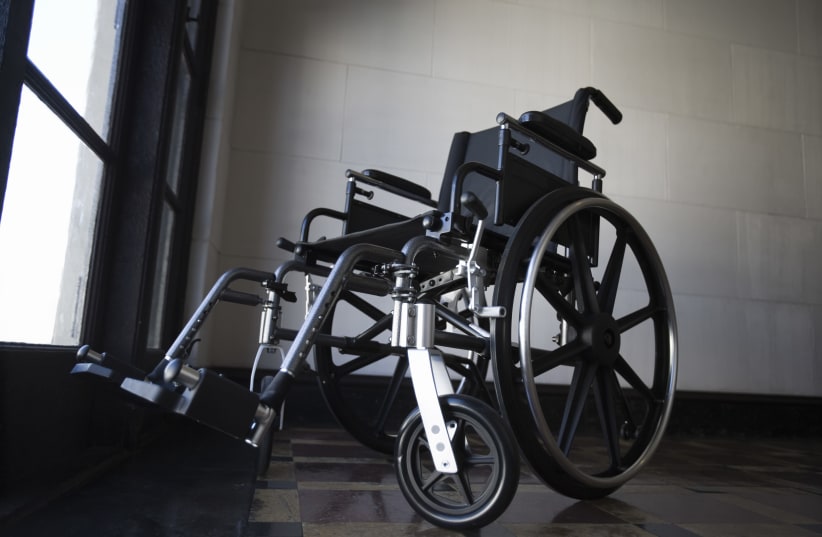Did you know that nearly 20% of people with physical disabilities consider cosmetic surgery? Liposuction can be a game-changer for these individuals with mobility disabilities, offering a path to improved body image and confidence through accessibility efforts on the website of asps. However, accessibility considerations are crucial.
Patients with physical disabilities face unique challenges during the liposuction process. From pre-surgery consultations to recovery, every step needs to be adapted for their needs. Understanding these factors, including web accessibility and accessibility options, is essential for both patients and healthcare providers in the content of a website. This blog post dives into the key aspects of liposuction for patients with physical disabilities, highlighting the importance of tailored approaches that prioritize comfort and safety. Let’s explore how this procedure can be made accessible for everyone.
Key Takeaways
-
Liposuction can provide significant benefits for patients with physical disabilities, improving mobility and posture, as discussed in the “Enhancing Mobility and Posture” section.
-
Accessibility is crucial in liposuction treatments; ensure that medical facilities are equipped to cater to patients with diverse needs, as highlighted in “Importance of Accessibility in Treatment.”
-
Patients should seek out clinics that prioritize a supportive environment, which can enhance the overall experience and outcomes of the procedure, as emphasized in “Ensuring a Supportive Environment.”
-
Improving self-image and confidence is a major advantage of liposuction for disabled individuals; this is elaborated in the “Boosting Self-Image and Confidence” section.
-
Consult with healthcare professionals about how liposuction can fit into your health goals and lifestyle improvements, as noted in “Health and Lifestyle Improvements.”
-
Always address any accessibility concerns before undergoing treatment to ensure a smooth process and positive experience, as mentioned in “Addressing Accessibility Concerns.”
Understanding Liposuction Procedures
Liposuction is a surgical procedure aimed at removing excess fat from specific areas of the body. This method helps to contour and shape the body, making it popular among many patients. It is not a weight-loss solution but focuses on targeted fat removal, asps on the website.
Tumescent Liposuction
Tumescent liposuction is the most common technique used today. Surgeons inject a solution containing saline, lidocaine, and epinephrine into the target area. This fluid helps to numb the area and minimize bleeding. After this preparation, a thin tube called a cannula is inserted through small incisions. The surgeon then uses suction to remove the fat.
Laser-Assisted Liposuction
Laser-assisted liposuction uses laser energy to break down fat cells before removal, asps, website. The laser melts the fat, making it easier to suction out. This method may result in less bruising and swelling compared to traditional techniques. Patients often experience quicker recovery times with laser-assisted procedures.
Other Techniques
Other liposuction methods include ultrasound-assisted liposuction (UAL), power-assisted liposuction (PAL), and asps. UAL uses sound waves to liquefy fat before removal. PAL employs a vibrating cannula that helps to break up fat more easily. Each technique has its advantages and is chosen based on patient needs.
Typical Process
The liposuction process begins with an initial consultation. During this meeting, the surgeon assesses the patient’s health and discusses goals. They will explain what to expect during the procedure and recovery asps.
On the day of surgery, anesthesia is administered for comfort. The surgeon then makes small incisions in the targeted area. After injecting the tumescent solution or using laser energy, asps proceed with fat removal.
Recovery varies by individual but typically lasts one to two weeks. Patients may experience swelling, bruising, and discomfort during this time. Most can return to light activities within a week asps but should avoid strenuous exercise for several weeks.
Post-Procedure Care
After surgery, follow-up appointments are essential for monitoring progress. Surgeons provide specific guidelines for post-operative care, including how to manage pain and swelling asps. Compression garments are often recommended to support healing.
Patients should maintain a healthy lifestyle after liposuction. While results can be long-lasting, weight gain can affect overall outcomes. Regular exercise and balanced nutrition help sustain results.

Benefits for Patients with Disabilities
Physical Comfort
Liposuction can significantly improve physical comfort for patients with mobility disabilities. Excess fat in certain areas can cause discomfort and pain. For those who face challenges in movement, this discomfort can be more pronounced. By removing fat deposits, liposuction helps alleviate this pain. Patients often report feeling lighter and more comfortable after the procedure.
Reducing fat in mobility-challenged areas can also improve posture. Better posture can lead to less strain on joints and muscles. This change enhances overall physical well-being. Many individuals with specific disabilities find daily tasks easier after the procedure.
Enhanced Independence
Improved independence is another key benefit of liposuction for disabled patients. After the procedure, many notice a greater ease of movement. They can perform activities that were once difficult or impossible. Simple tasks like walking or climbing stairs become more manageable.
Increased independence boosts self-esteem as well. Patients feel more confident in their bodies. This newfound confidence encourages them to engage in social activities. It may even inspire them to pursue new interests or hobbies.
Health Risk Reduction
Liposuction plays a vital role in reducing health risks associated with obesity for disabled patients. Obesity can lead to serious health issues, including diabetes and heart disease. These conditions are especially concerning for individuals with certain disabilities.
By removing excess fat, liposuction reduces body mass index (BMI). A lower BMI decreases the likelihood of developing these health problems. Patients may experience improved overall health and vitality after the procedure.
Accessibility Considerations
The Disabilities Act ensures that patients have access to necessary medical procedures like liposuction. Title II regulations require healthcare facilities to accommodate individuals with disabilities. These regulations help ensure that all patients receive equal treatment.
Healthcare providers must consider accessibility when offering liposuction services. Facilities should be equipped with proper tools and support systems for disabled patients. This includes accessible examination rooms and recovery areas.
Patients should feel safe and comfortable during their procedures. Proper accommodations can make a significant difference in their experience.
Importance of Accessibility in Treatment
Accessible Facilities
Accessible facilities are crucial for patients with physical disabilities. Accessibility means that all areas of a medical facility can be reached without barriers. This includes ramps, wider doorways, and accessible restrooms. An accessible examination room allows patients to feel comfortable and safe during their appointments.
Equipment must also cater to diverse needs. An accessible table is essential for examinations and procedures. It should adjust in height and support various mobility devices. This ensures that everyone has equal access to care.
Trained Medical Staff
Medical staff play a vital role in providing care to patients with disabilities. They must receive training on how to assist these individuals effectively. Understanding the unique challenges faced by patients is key. Staff should know how to use accessibility technology and tools properly.
Empathy and communication are equally important. Patients often feel anxious about their conditions. Staff trained in these areas can help ease concerns. They can explain procedures clearly and offer support throughout the process.
Care Plans
Pre- and post-operative care plans must include accessibility considerations. These plans should address the specific needs of patients with disabilities. For example, transportation arrangements may be necessary for follow-up visits.
Home care recommendations should consider accessibility features. This might involve suggesting modifications like grab bars or ramps at home. Ensuring that patients have the necessary resources promotes recovery.
Emotional Support
Emotional support is also a critical aspect of accessible health care services. Patients often face social stigma regarding their disabilities. Support groups can provide a safe space for sharing experiences. Connecting with others who understand their journey can be empowering.
Healthcare providers should encourage participation in such groups. This fosters a sense of community and belonging among patients.
Enhancing Mobility and Posture
Improved Balance
Removing excess fat can significantly improve balance. Patients with physical disabilities often struggle with stability. Liposuction helps by reducing the weight they carry. This reduction in weight leads to a more stable center of gravity. As a result, individuals may find it easier to stand and walk. Better balance can lead to fewer falls and injuries.
Gait Enhancement
Gait refers to how a person walks. Excess body fat can disrupt normal gait patterns. Liposuction can help correct these patterns by removing fat from areas that affect movement. With less weight to carry, patients may experience smoother walking motions. Improved gait can enhance overall mobility. This change allows individuals to engage more in daily activities.
Joint Strain Reduction
Excess weight puts strain on joints and muscles. This strain can lead to pain and discomfort, especially for those with physical disabilities. Liposuction reduces the load on these joints. Fewer pounds mean less pressure on knees, hips, and ankles. Over time, this can lead to improved joint health. Patients may notice reduced pain levels after the procedure.
Muscle Relief
Muscles work harder when supporting excess weight. This extra effort can cause fatigue and soreness. By eliminating unnecessary fat through liposuction, muscles have less work to do. Patients often report feeling more energetic post-procedure. They may also find it easier to participate in physical therapy or exercise programs.
Posture Improvement
A balanced body weight distribution can greatly enhance posture. Poor posture is common among individuals with physical disabilities due to uneven weight distribution. Liposuction creates a more even silhouette, allowing for better alignment of the spine and pelvis. Improved posture can reduce back and neck pain over time.
Emotional Well-being
Physical changes from liposuction can boost self-esteem. Many patients feel more confident in their bodies after the procedure. This confidence encourages them to be more active. Increased activity further enhances mobility and overall health.
Accessibility Considerations
Accessibility remains crucial for all patients considering liposuction. Clinics should ensure that facilities accommodate individuals with disabilities. This includes accessible entrances, examination rooms, and recovery areas. Proper support during the treatment process is essential for positive outcomes.
Boosting Self-Image and Confidence
Body Contours
Achieving desired body contours can significantly enhance self-esteem. Many individuals with physical disabilities face challenges regarding their body image. Liposuction offers a solution to reshape areas that may not respond to diet or exercise.
When patients see a change in their bodies, it often leads to a boost in confidence. They may feel more positive about their appearance. This newfound confidence can influence various aspects of life, including personal relationships and career opportunities.
Comfort in Skin
Feeling comfortable in one’s own skin is crucial for mental well-being. Many people struggle with insecurities related to their bodies. For those with physical disabilities, this can be even more pronounced.
Liposuction can help alleviate these feelings. Patients report feeling more at ease with their bodies after the procedure. This comfort allows them to express themselves freely without fear of judgment.
Social Engagement
Increased social engagement is another benefit of liposuction. After the procedure, many patients find themselves more willing to participate in social activities. Feeling good about one’s appearance can motivate individuals to interact more with others.
As confidence grows, so does the desire for social connections. Patients may join groups or engage in activities they previously avoided. This change can lead to improved mental health and overall happiness.
Activity Levels
Higher activity levels often follow liposuction procedures. Patients tend to feel more energetic and willing to explore new hobbies or interests. This increase in activity can positively impact both physical and mental health.
With improved body image, individuals may seek out fitness classes or outdoor activities. Engaging in these pursuits can further enhance self-esteem and foster a sense of community.
Emotional Well-Being
The emotional benefits of liposuction extend beyond the physical changes. Many patients experience a sense of empowerment after achieving their desired look. This empowerment encourages them to set new goals and pursue dreams they once thought were unattainable.
By addressing body image concerns, liposuction helps create a positive feedback loop. Increased self-esteem leads to greater social interaction, which in turn boosts confidence even further.
Health and Lifestyle Improvements
Blood Pressure Benefits
Liposuction can lead to significant health improvements. Many people experience better blood pressure levels after the procedure. Removing excess fat reduces strain on the heart. This may decrease the risk of heart disease. Studies show that weight loss contributes to lower cholesterol levels as well. Improved cholesterol can help prevent future health issues.
Healthy Lifestyle Maintenance
Maintaining a healthy lifestyle is essential after liposuction. The results of the procedure can be sustained through balanced nutrition and regular exercise. Patients should focus on eating fruits, vegetables, and whole grains. These foods support overall health and help maintain weight loss. Regular physical activity also plays a crucial role. Engaging in activities like walking or swimming can enhance overall well-being.
Motivation for Change
Liposuction can serve as a catalyst for healthier habits. Many individuals feel motivated to change their eating patterns post-surgery. They may choose to avoid processed foods and sugary drinks. This shift often leads to better nutritional choices over time. Exercise becomes more appealing too. Feeling lighter and more energetic encourages increased physical activity.
Options for Accessibility
Accessibility is vital for patients with physical disabilities considering liposuction. Policies must ensure that facilities accommodate these patients properly. Clinics should provide accessible equipment and trained staff. This creates a supportive environment for recovery and ongoing health improvements.
Devices and Resources
Various devices can aid in maintaining a healthy lifestyle post-liposuction. For example, fitness trackers help monitor activity levels. Many websites offer meal plans tailored for various dietary needs. These resources empower individuals to make informed decisions about their health.
Reader Engagement
Readers should consider how liposuction fits into their overall health journey. It is not just about cosmetic changes; it’s about improving life quality. By addressing underlying health issues, patients can experience transformative results.
Addressing Accessibility Concerns
Common Barriers
Disabled patients often encounter accessibility issues when seeking liposuction. Many clinics lack physical accommodations, such as ramps or elevators. This limits access for those with mobility challenges. Some facilities may not have staff trained in assisting patients with disabilities. This lack of training can create an uncomfortable experience for patients.
Information about liposuction is sometimes hard to find. Websites may not meet web accessibility standards, making them difficult to navigate. Patients with visual impairments may struggle with poorly designed sites that do not follow the Web Content Accessibility Guidelines (WCAG). This discourages individuals from seeking necessary information about procedures.
Improving Access to Information
To improve access, clinics should enhance their accessibility options. They can implement accessible design features on their websites. This includes using larger fonts and contrasting colors for better visibility. Adding an accessibility menu can help users easily find resources tailored to their needs.
Providing clear, concise information is crucial. Clinics should offer materials in multiple formats, including audio and braille. This ensures that all patients receive the same level of information about liposuction procedures.
Training staff on how to assist disabled patients is essential. Staff should understand specific accessibility requirements and be prepared to accommodate various disabilities. This training fosters a welcoming environment and encourages more patients to seek services.
Advocating for Policy Changes
Advocacy for policy changes is vital for equitable healthcare access. Healthcare providers must recognize the importance of inclusive practices. Policies should mandate that all facilities meet specific accessibility standards. These standards should cover both physical spaces and digital platforms.
Government initiatives can play a significant role in supporting these changes. Funding programs that assist clinics in upgrading their facilities would benefit many patients. Establishing a dedicated accessibility server could facilitate better communication between patients and providers.
Healthcare organizations should also collaborate with disability advocacy groups. These partnerships can lead to more effective policies and practices that truly address patient needs.
Ensuring a Supportive Environment
Importance of Support
A supportive network is crucial for recovery after liposuction, especially for patients with physical disabilities. This support can come from family, friends, and healthcare providers. Emotional and physical assistance aids healing. Patients often face unique challenges during recovery. Having someone to help with daily tasks can make a significant difference.
Support also helps in managing pain and discomfort. It encourages patients to follow post-surgery guidelines. Adhering to these guidelines promotes better outcomes. Understanding the importance of this support leads to a smoother recovery process.
Open Communication
Open communication between patients, caregivers, and healthcare providers is essential. Discussing concerns about surgery and recovery can reduce anxiety. Patients should feel comfortable asking questions. Caregivers need to share their observations about the patient’s condition. This exchange of information helps tailor care to individual needs.
Policies should promote this open dialogue. Healthcare facilities must create an environment where patients feel safe expressing their needs. Regular check-ins by healthcare providers can strengthen this relationship. Following up on progress ensures that any issues are addressed promptly.
Benefits of Support Groups
Support groups play a vital role in emotional well-being post-surgery. These groups provide a platform for sharing experiences and feelings. Patients can connect with others who understand their journey. This connection fosters a sense of belonging.
Counseling services can complement support groups. Professional guidance helps patients cope with emotional challenges after surgery. Understanding that others face similar struggles can be comforting. Engaging in discussions about fears and expectations leads to healthier coping strategies.
Patients benefit from both types of support. They gain insights into recovery processes and learn new ways to manage emotions. Together, these resources create a comprehensive support system.
Accessibility Standards
Healthcare facilities must meet accessibility standards for all patients, including those with disabilities. Following these standards ensures that everyone receives equitable care. Facilities should be designed to accommodate various needs.
Compliance with policies regarding accessibility is necessary for effective treatment. Staff training is also essential in understanding how to assist disabled patients properly. Awareness of specific challenges faced by these individuals improves overall care quality.
Final Remarks
Liposuction can be a game-changer for patients with physical disabilities. It offers numerous benefits, from improved mobility to enhanced self-image. Accessibility is crucial in ensuring that everyone can access these life-changing procedures. You deserve a supportive environment that caters to your unique needs.
The journey doesn’t stop here. If you or someone you know is considering liposuction, take the next step. Research clinics that prioritize accessibility and support. Consult with professionals who understand your concerns. Make informed decisions for a brighter, more confident future. Your well-being matters, so let’s make it happen together!
Frequently Asked Questions
What is liposuction?
Liposuction is a cosmetic procedure that removes excess fat from specific areas of the body. It enhances body contours and can improve overall appearance.
Can patients with physical disabilities undergo liposuction?
Yes, patients with physical disabilities can undergo liposuction. However, a thorough evaluation by a qualified surgeon is essential to assess individual needs and suitability.
What are the benefits of liposuction for individuals with disabilities?
Liposuction can enhance mobility, improve posture, boost self-image, and promote a healthier lifestyle for individuals with disabilities. These benefits contribute to overall well-being.
How does accessibility play a role in liposuction procedures?
Accessibility ensures that facilities are equipped to accommodate patients with disabilities. This includes wheelchair access, appropriate surgical tables, and specialized care during recovery.
What should patients consider regarding post-operative care?
Post-operative care is crucial for recovery. Patients should ensure they have accessible support systems in place, including assistance with mobility and daily activities during healing.
Are there any risks associated with liposuction for disabled patients?
As with any surgery, risks exist. Disabled patients may face additional challenges, so it’s vital to discuss potential complications with a qualified surgeon beforehand.
How can I find a surgeon experienced in treating patients with disabilities?
Look for board-certified plastic surgeons who specialize in accessibility considerations. Online reviews and recommendations from disability advocacy groups can also help identify suitable practitioners.





